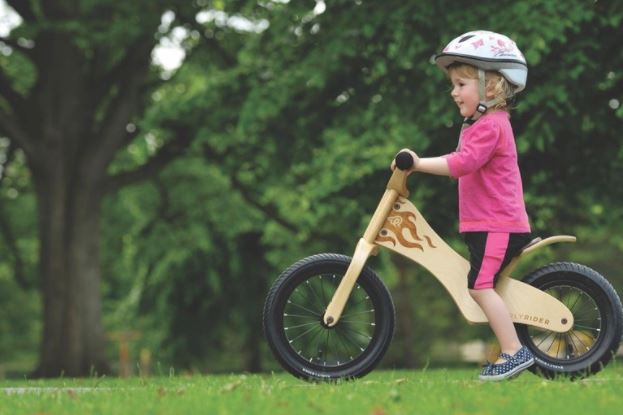Balance bikes for the kids are pedal-less bikes designed for boys and girls from one and a half years of age, that is, very soon after learning to walk. These promote cognitive development such as balance, agility, reflexes and coordination in a very safe way.
Balance bikes are much simpler than conventional bikes, but their choice must be just as careful because the child’s experience can vary enormously according to factors such as size, weight or the presence of additional elements such as manual brakes or footrests. When choosing, the comfort and safety of the child should be a priority. We share the main aspects that you should consider when looking for a balance bike:
1) The Size
There are two variables that determine the size of balance bikes: the size of the wheel and the height of the saddle. The wheels range from 10 ”to 16” and determine how long it can be used before the child is too big for the bicycle. However, the height of the saddle is the best way to assess whether the bike fits your little one. As a general rule, the saddle should be 5 centimeters below the crotch height of the standing child.
2) Weight
A very heavy bicycle can be difficult to propel and maneuver, so it is recommended that the bicycle weigh no more than 30% of the child’s body weight. It may be necessary to sacrifice other benefits such as larger wheel diameters or additional brakes to achieve the ideal bike weight.
3) The Geometry
Since this bike requires leg thrust, children should have enough space between the saddle and the handlebars to lean forward and should not have obstacles that prevent them from freely extending their legs backward when striding. Additionally, the saddle placed in the lowest position must be very close to the rear wheel, since the center of gravity must be low to increase the stability of the bicycle.
4) The Tires
Tire material, tread and size determine the bike’s damping and traction. There are basically three types of tires: air tires, rubber tires, and hard plastic tires. The air ones provide greater cushioning and traction, only they can suffer eventual punctures. The rubber ones are a little lighter but have very little traction and, since they are rigid, they do not cushion impacts. The hard plastic ones are the cheapest and of the lowest quality. They are designed for indoor use only.
5) The Material
There are three materials most used for the manufacture of balance bikes: metal, wood and composite . Its different characteristics affect the total weight of the bicycle and its durability.


